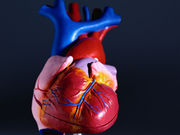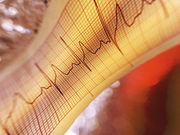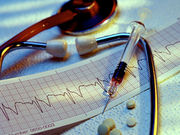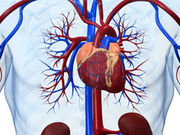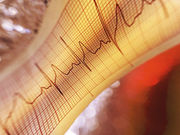Tag: Atrial Fibrillation
Ablating Non-Pulmonary Vein Triggers Improves A-Fib Outcome
Success rate 81 percent for those with, 8 percent for those without non-pulmonary vein ablation
Warfarin, Rivaroxaban Similarly Safe, Effective
Findings among cases of mild atrial fibrillation-related acute ischemic stroke
Low Incidence of Adverse Events for A-Fib Catheter Ablation
Within 30 days of index CA, 3.5 percent developed major AEs, most often hemorrhage/hematoma
Less Than Half of Seniors With A-Fib Receive Anticoagulants
Increase in overall anticoagulant use over time, mainly due to increase in new oral anticoagulants
Incidence of Undiagnosed A-Fib May Be Substantial
In new study using insertable cardiac monitors, rate of AF detection was 40 percent at 30 months
Dual Therapy Noninferior to Triple Therapy for A-Fib With PCI
And lower risk of bleeding with dabigatran and P2Y12 inhibitor dual therapy versus triple therapy
Study Highlights Readmit Factors Post Atrial Flutter Ablation
Readmission rate found to be 18.19 percent
Most Common Arrhythmia: Intra-Atrial Re-Entrant Tachycardia
Among those age ≥50 years, atrial fibrillation increased with age to surpass IART as most common
Reduced eGFR, Increased UACR Linked to Incident A-Fib
Step-wise increase in adjusted risk of incident atrial fibrillation across categories of decreasing eGFR
Long Working Hours May Increase Risk of Developing A-Fib
Could help explain previously observed increased risk of stroke among those working long hours




